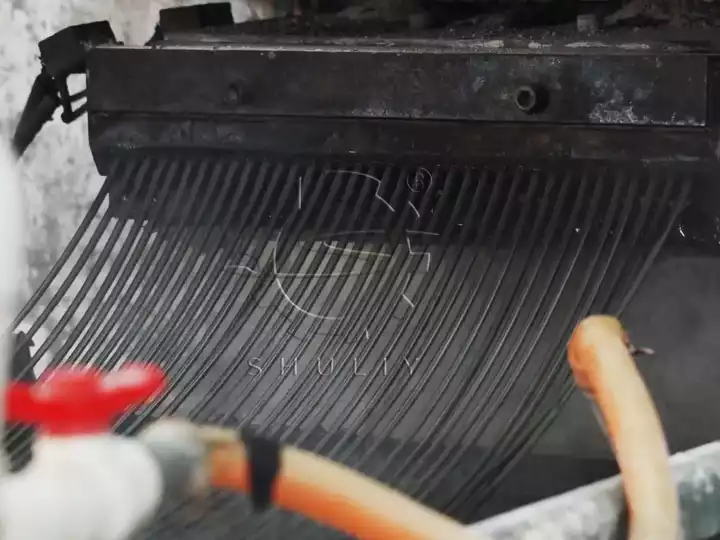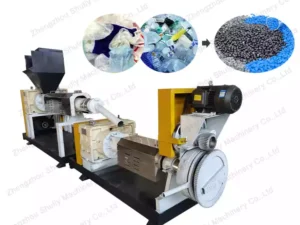A Visual Guide: The 7 Key Steps of the Strand Pelletizing Process
In the world of plastic extrusion technology, there are several methods to turn molten polymer into pellets. While options like underwater pelletizing have their place, the most widely used, reliable, and cost-effective method for many recycling applications is the strand pelletizing process.
But how a strand pelletizer works is often seen as a complex process. This guide breaks it down into 7 clear, logical steps. Understanding these plastic pelletizing steps is key to appreciating what makes a high-performance strand pelletizer machine and how it contributes to overall recycling line efficiency.
Step 1: Stable Melt Preparation (Extrusion)
The entire process begins inside the extruder. Plastic scrap is melted, mixed, and homogenized into a consistent molten polymer. The stability of this melt is critical for forming uniform strands later. This is where a two-stage extrusion process provides a significant advantage, ensuring the melt is thoroughly degassed and free of volatiles before it proceeds.
Step 2: High-Efficiency Plastic Melt Filtration
Before the molten plastic can be formed, it must be purified. It is forced through a robust screen pack to remove any final solid contaminants. A stable filtration process, often supported by a hydraulic screen changer, prevents pressure fluctuations that can disrupt the flow and affect the final pellet quality.
Step 3: Forming the Strands at the Plastic Extruder Die Head
The clean, molten polymer is pushed through a plastic extruder die head, which is a thick steel plate with multiple small, precisely drilled holes. As the plastic exits these holes, it forms continuous, uniform strands, similar in appearance to spaghetti. The design of the die head is critical for ensuring all strands are of a consistent diameter.

Step 4: Rapid Solidification in the Cooling Tank for Plastic
The hot, flexible strands immediately travel into a cooling tank for plastic, which is typically a long stainless steel trough filled with circulating water. This water bath rapidly quenches the strands, solidifying them from a molten state into solid, flexible rods.
Step 5: Dewatering the Strands
As the strands exit the water bath, they pass through a dewatering unit. This is often a powerful air knife or a series of rollers that blasts or squeezes off excess surface water. The strands must be sufficiently dry before entering the final cutting stage to ensure a clean cut and prevent moisture in the final product.
Step 6: Precise Cutting with a Plastic Pellet Cutter
The cooled, dry strands are now fed into the heart of the system: the plastic pellet cutter. In a typical roller cutter pelletizer, a set of feed rolls pulls the strands at a consistent speed into a high-speed rotating cutter assembly. The precision blades chop the strands into short, cylindrical pellets of a uniform length.
Step 7: Quality Control – Sieving and Storage
The final step is quality assurance. The newly cut pellets are passed over a vibrating sieve. This separates any oversized or undersized pieces (“fines”) and helps to further cool the pellets, preventing them from sticking together in the storage silo. The result is a batch of high-quality, uniform plastic pellets ready for bagging.
This entire 7-step strand pelletizing process is powered by a robust set of plastic recycling line components. The performance of the core strand pelletizer machine—determined by its motor power, screw design, and build quality—dictates the quality and consistency of the final output.
By understanding each step of the process, you can better appreciate how high-quality machinery leads to a superior final product, whether you are performing PE film granulation or recycling other thermoplastics.
Ready to see the machinery that powers this process? Explore the technical specifications of our complete strand pelletizing solutions.

